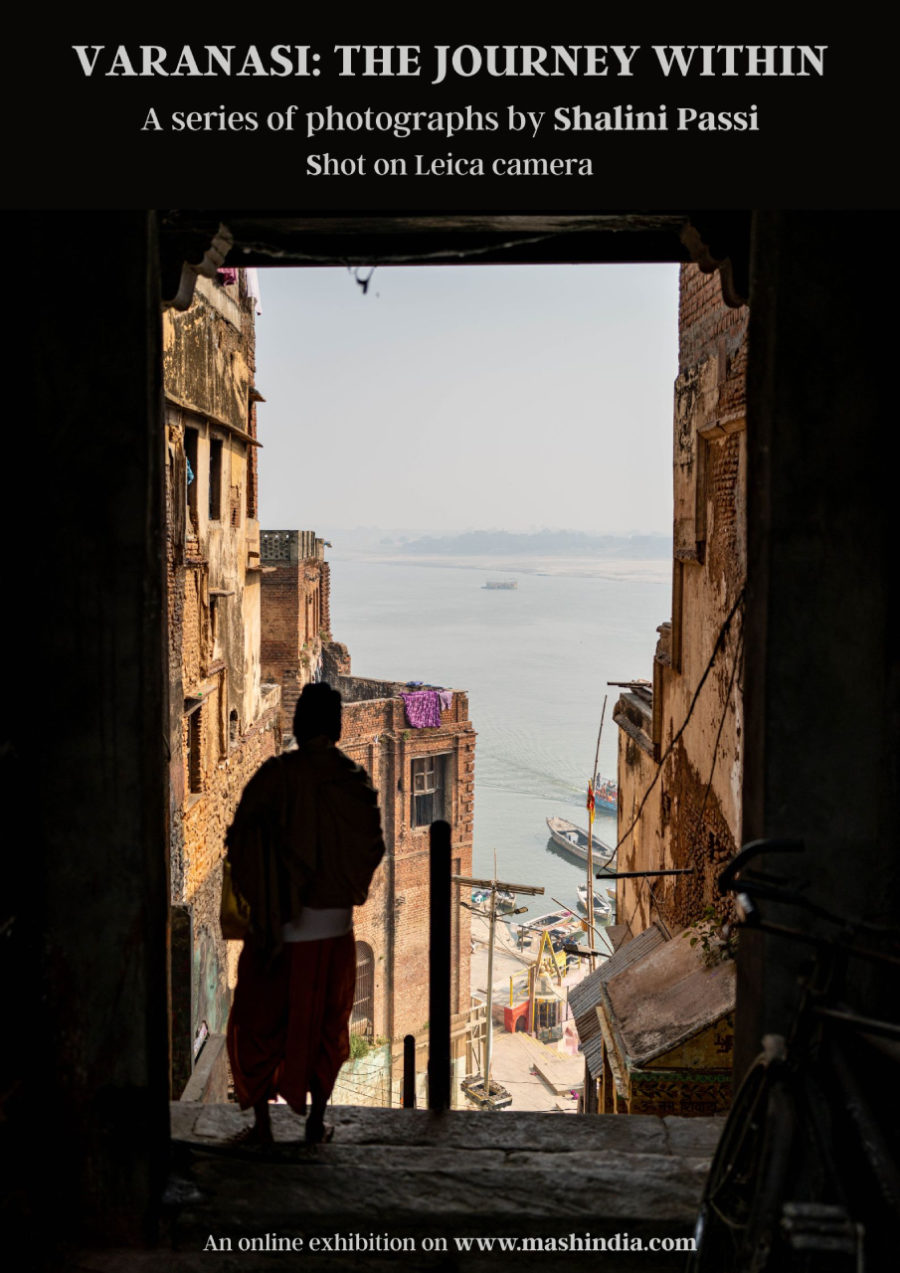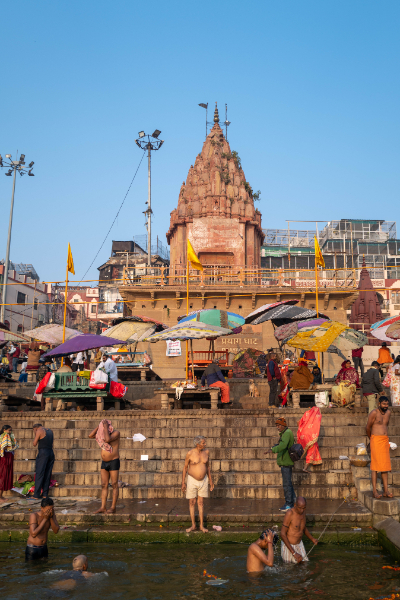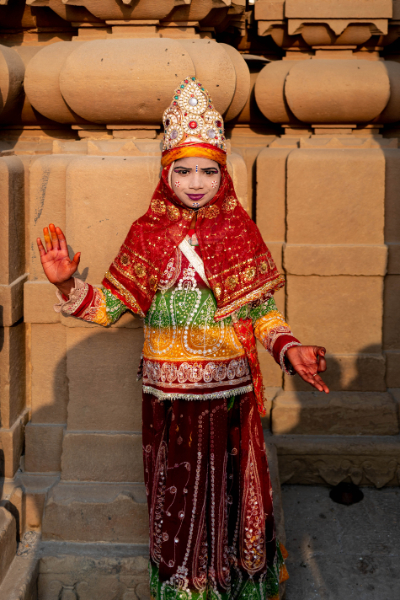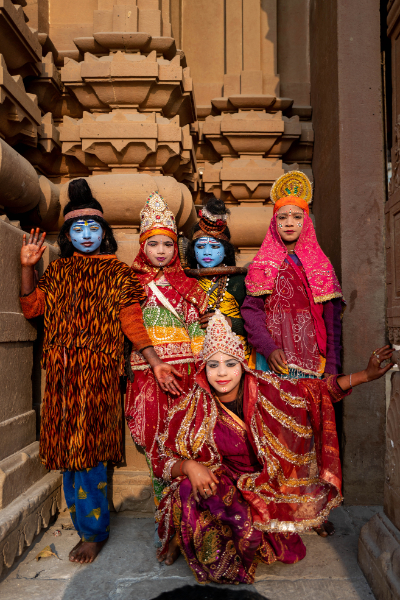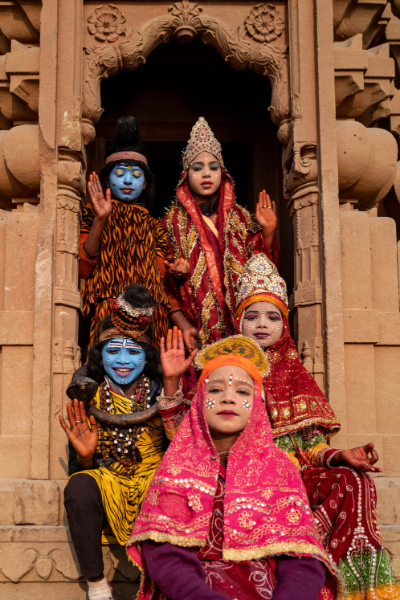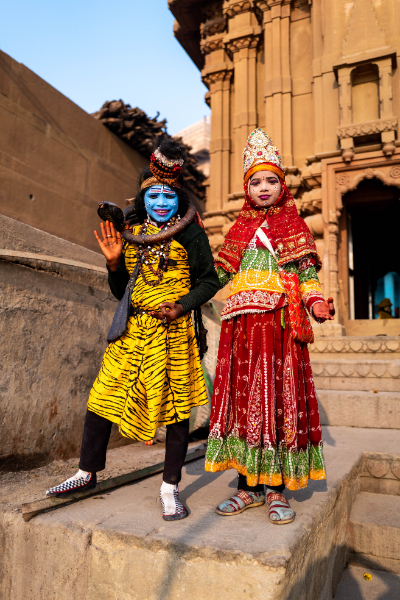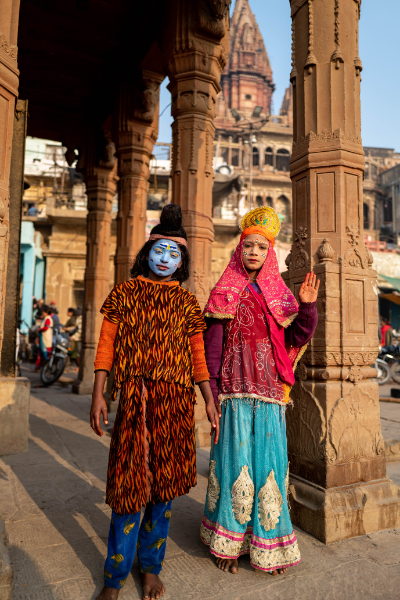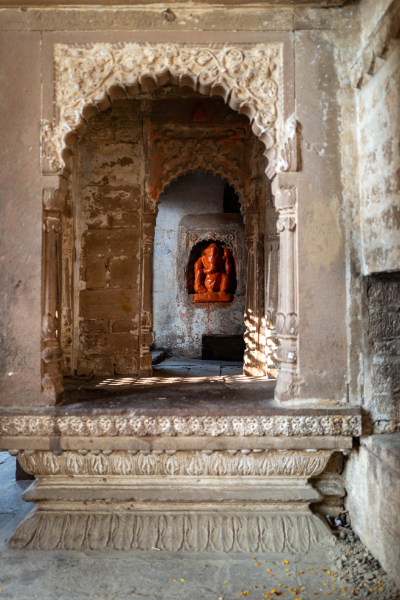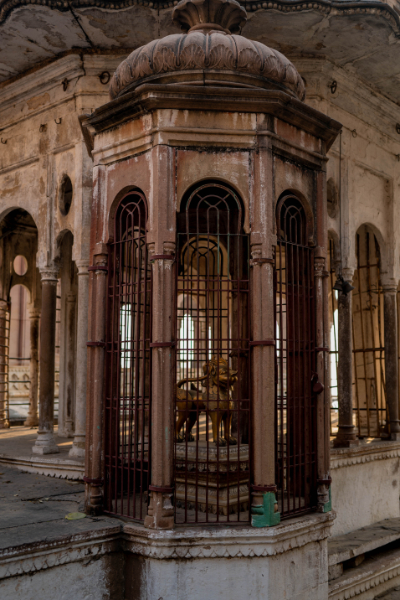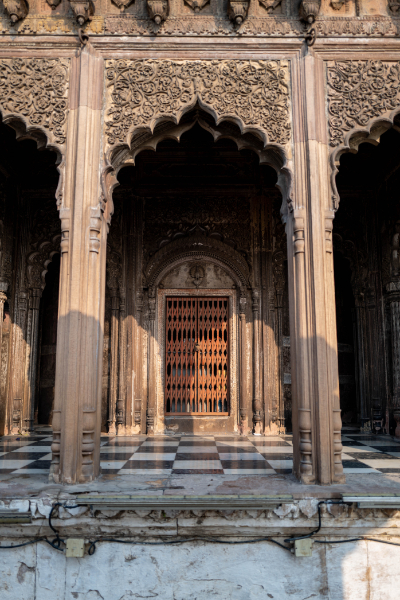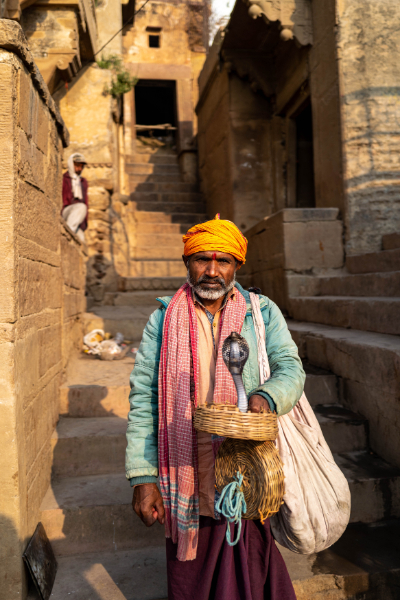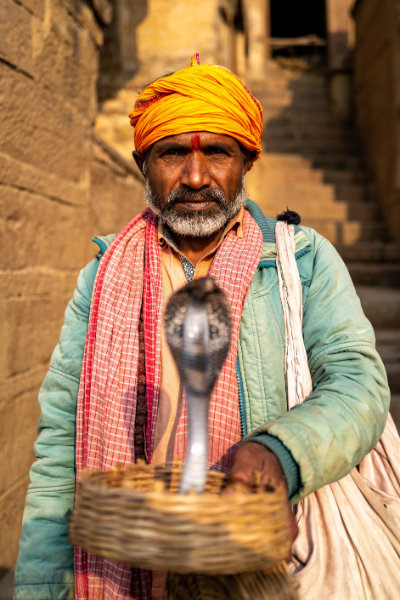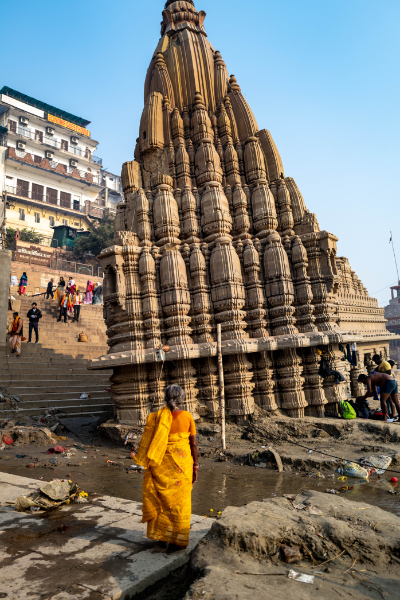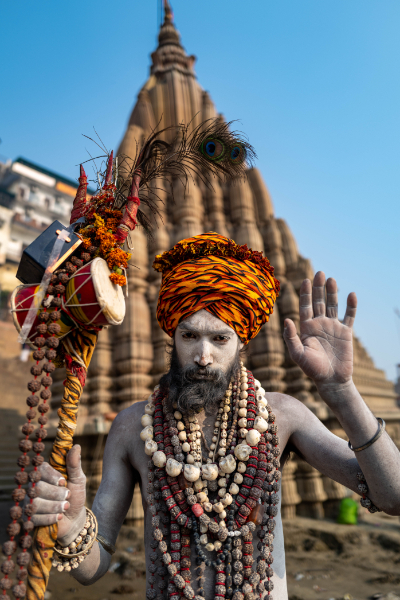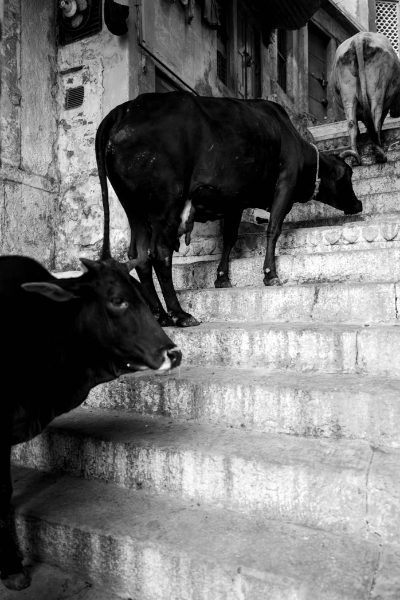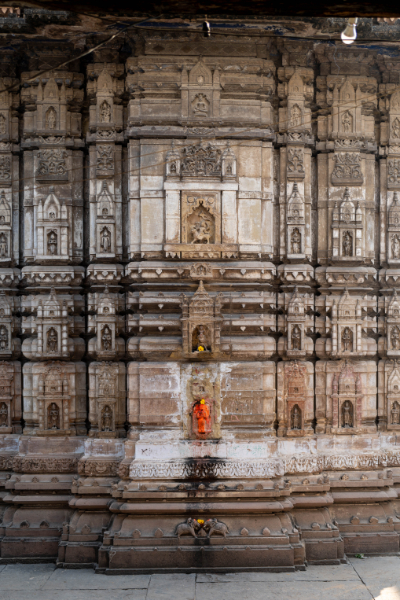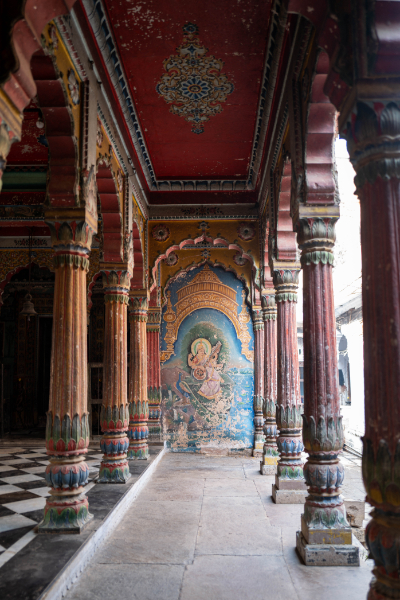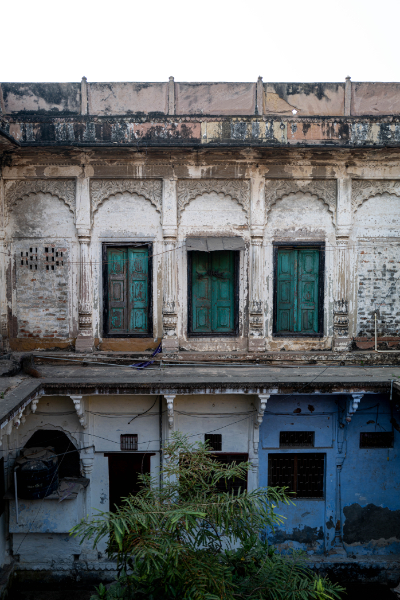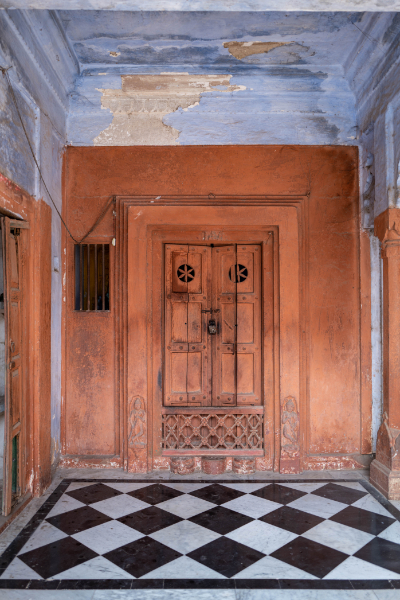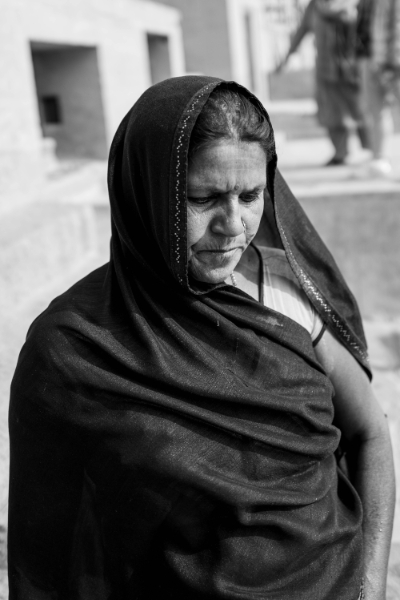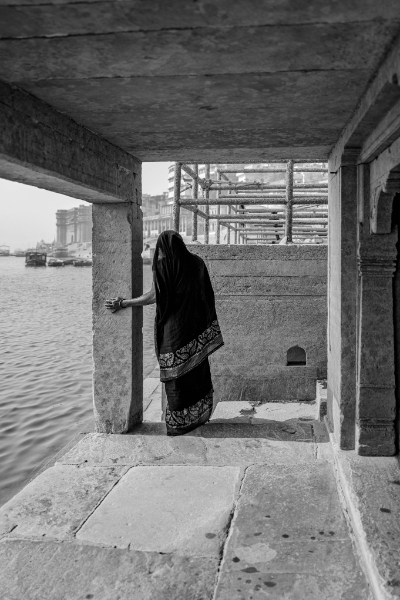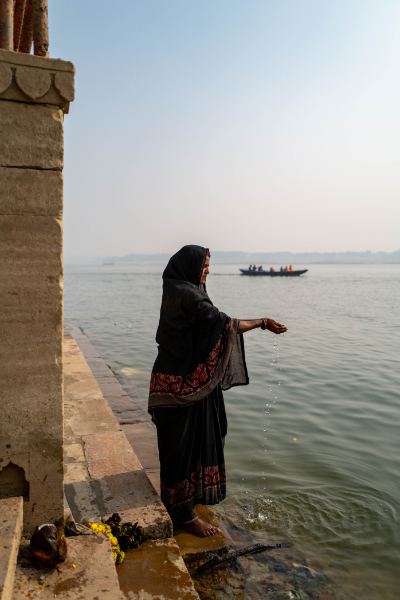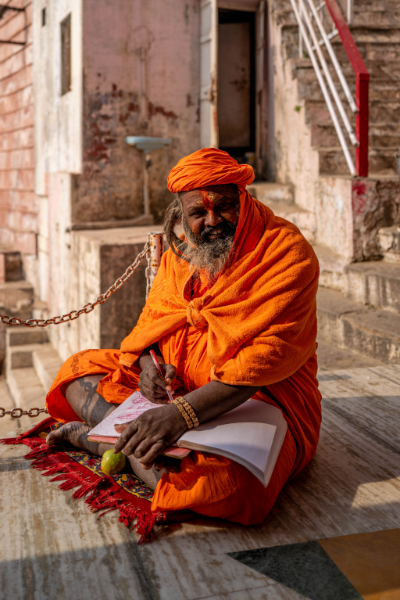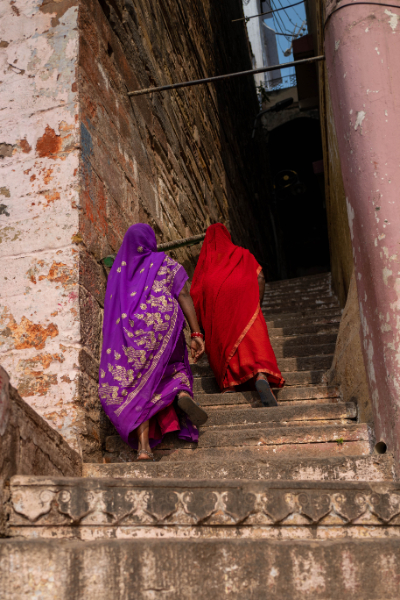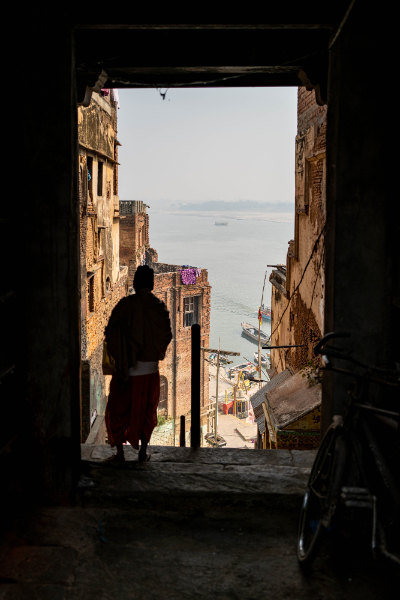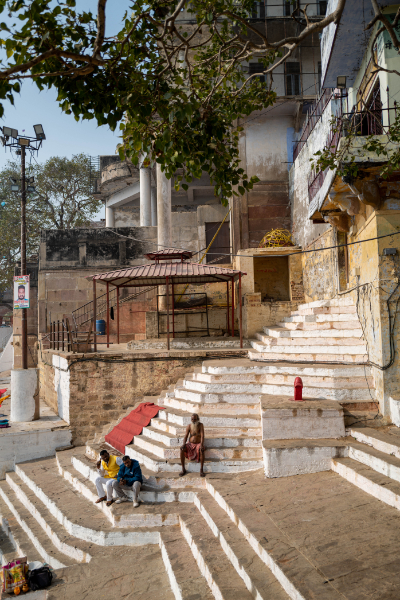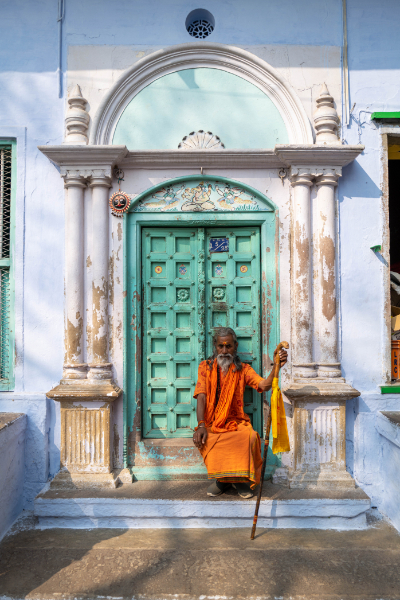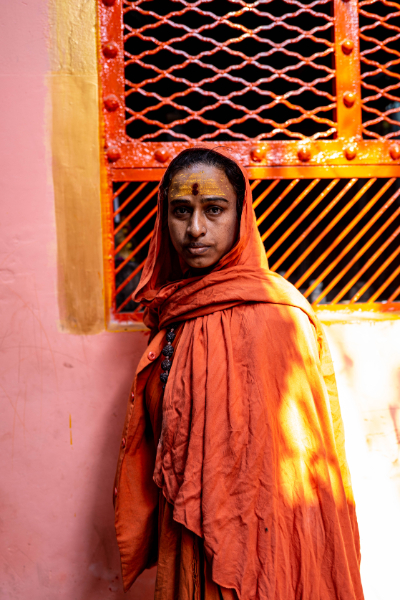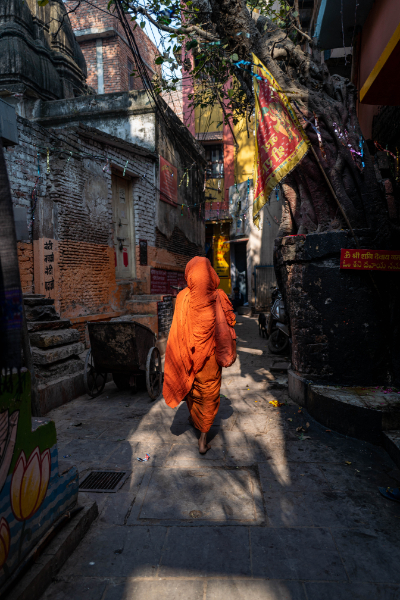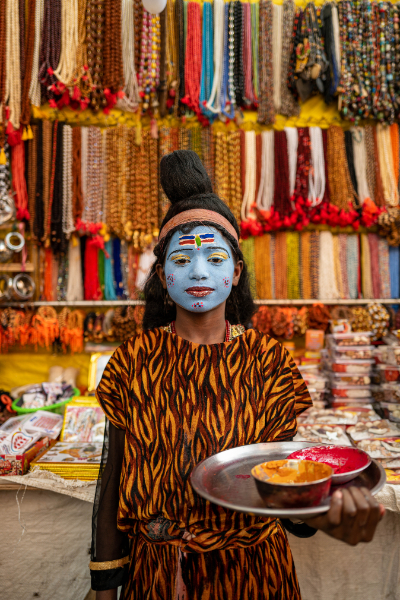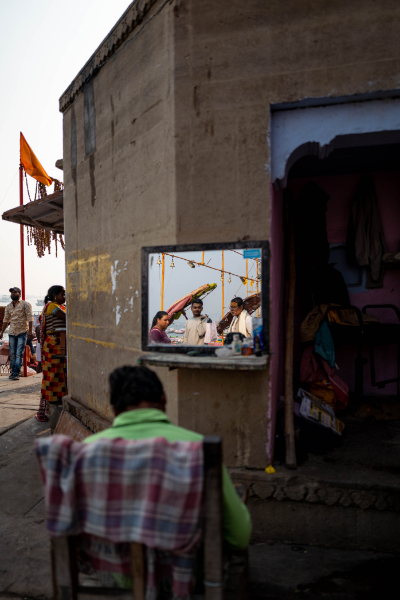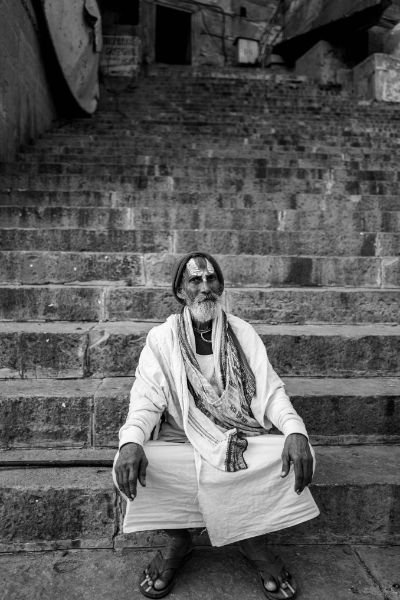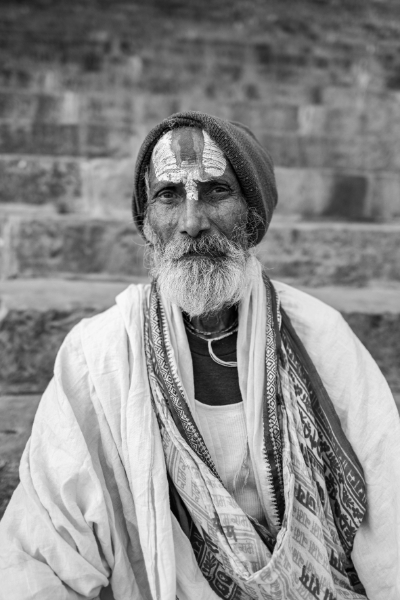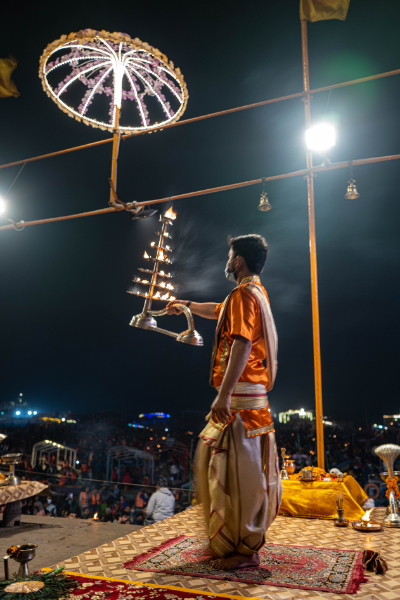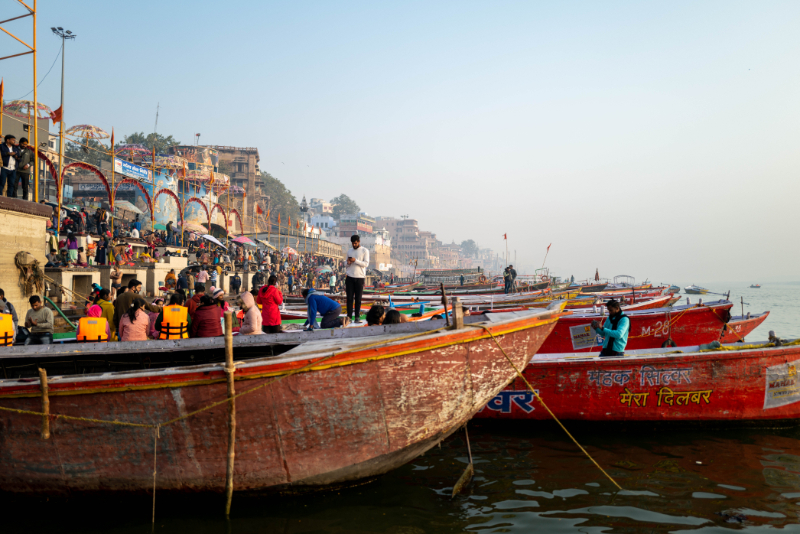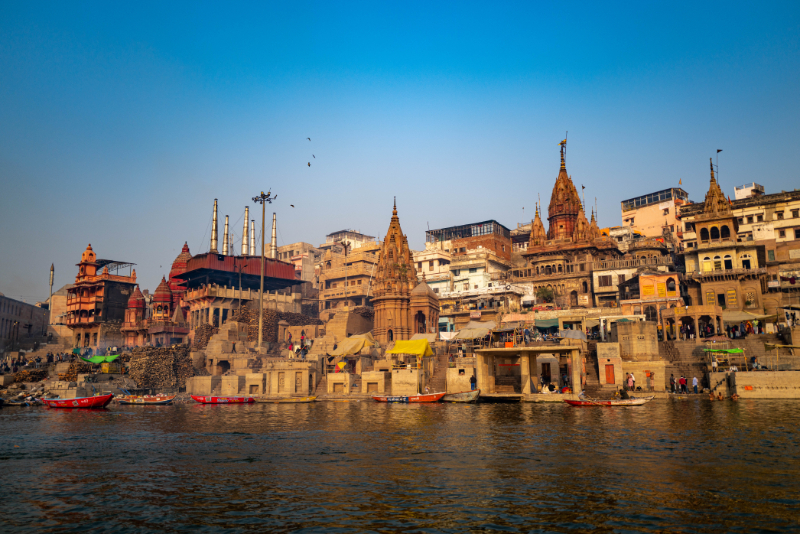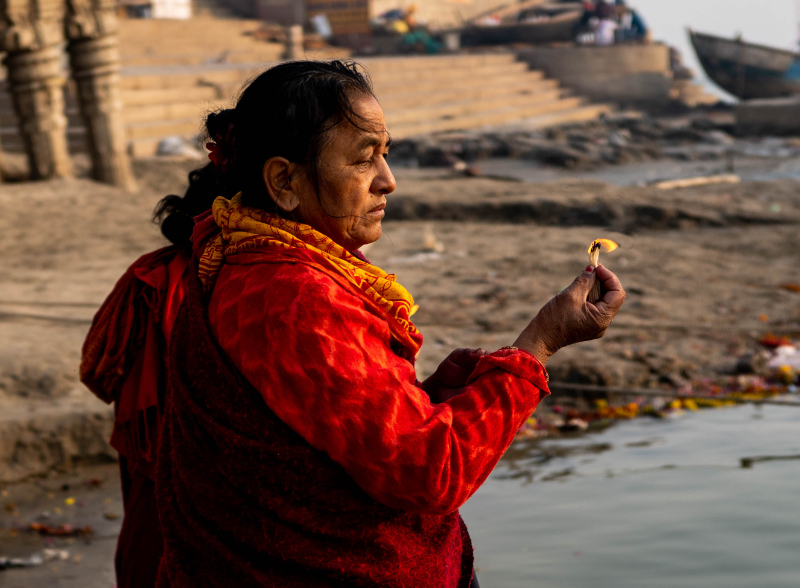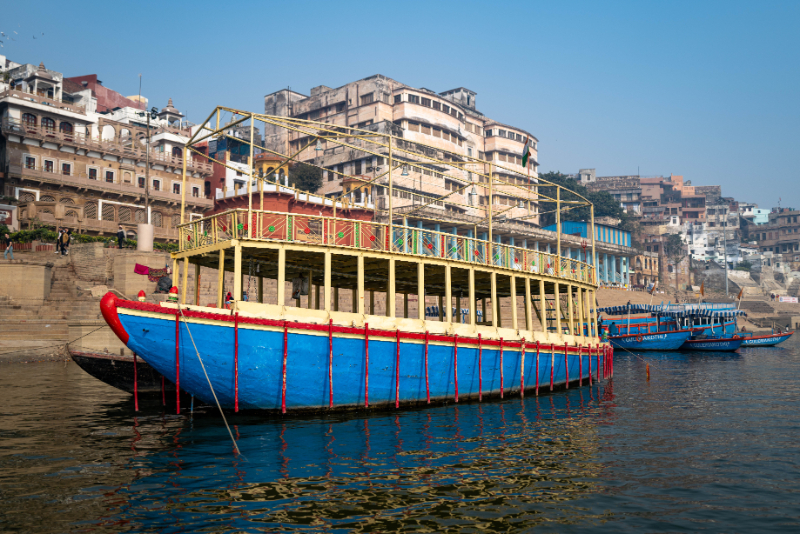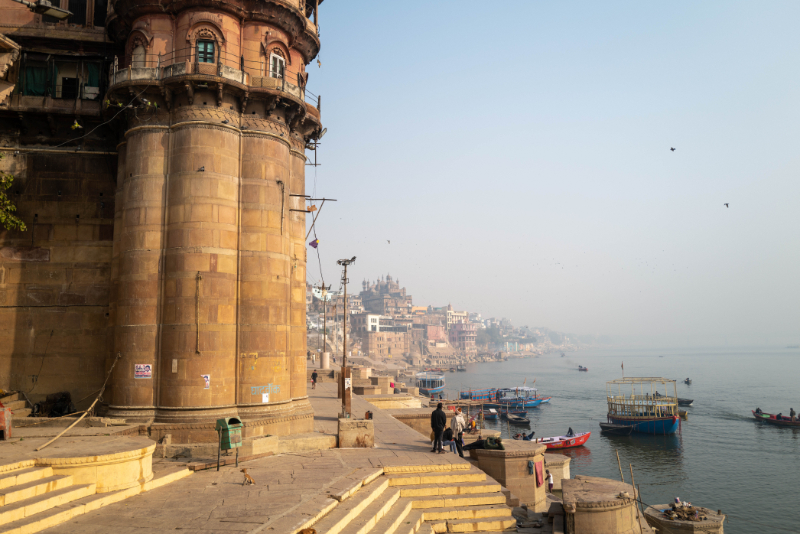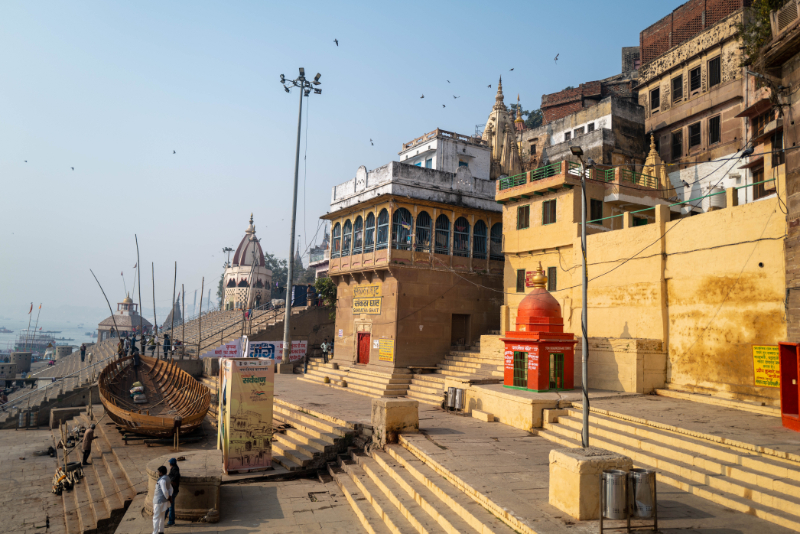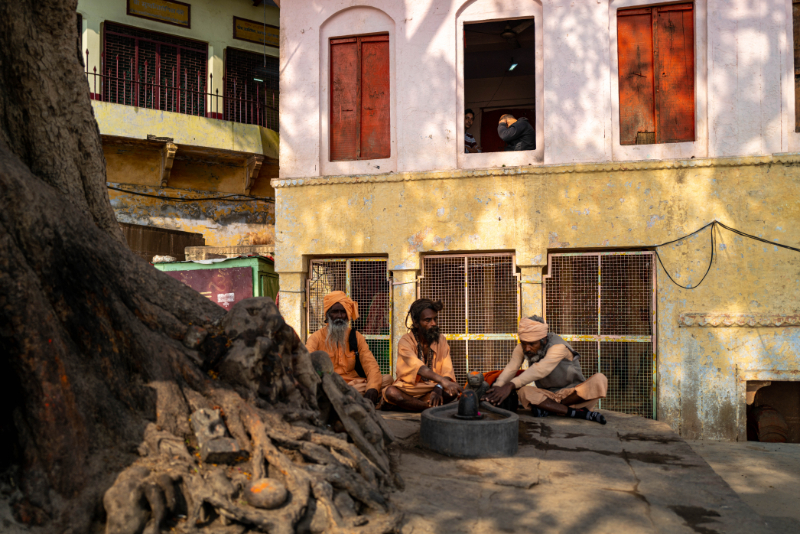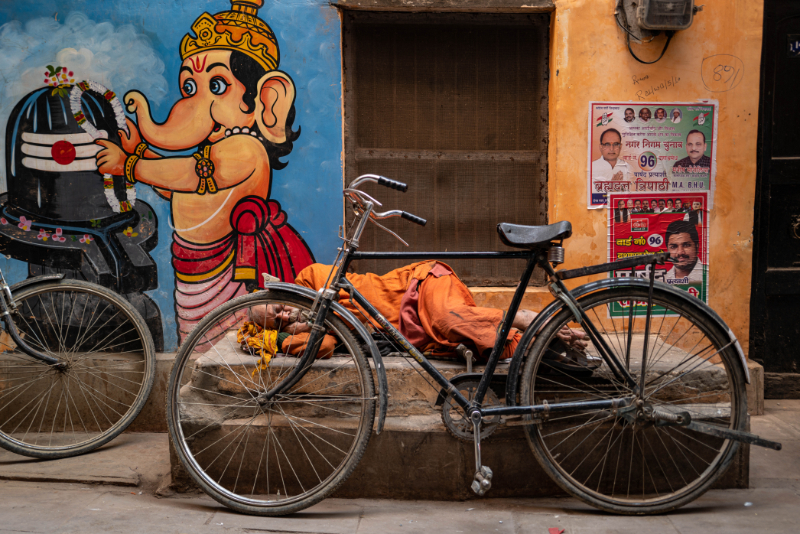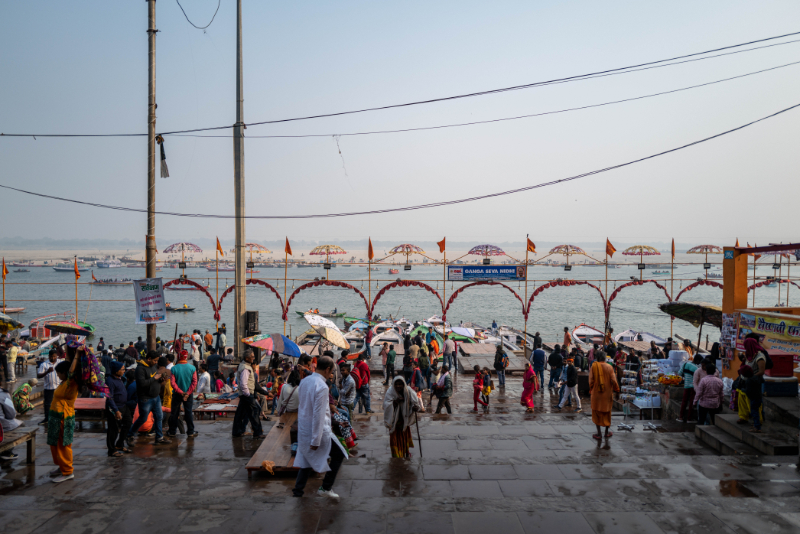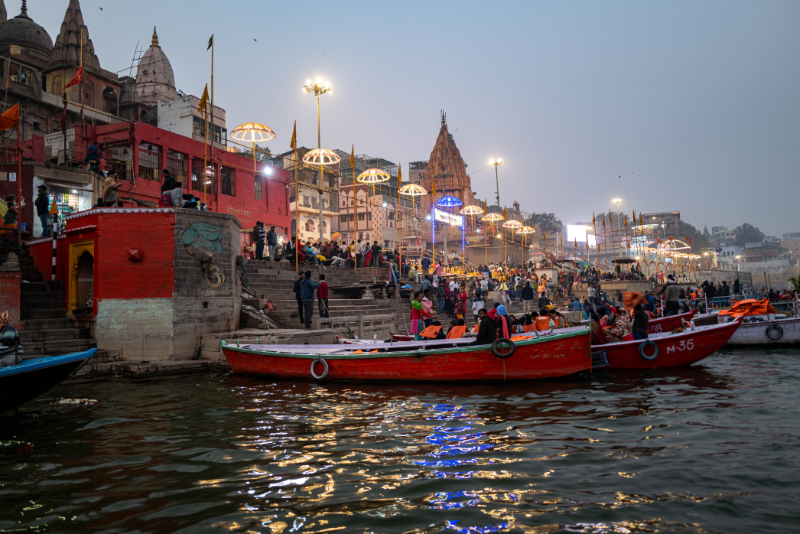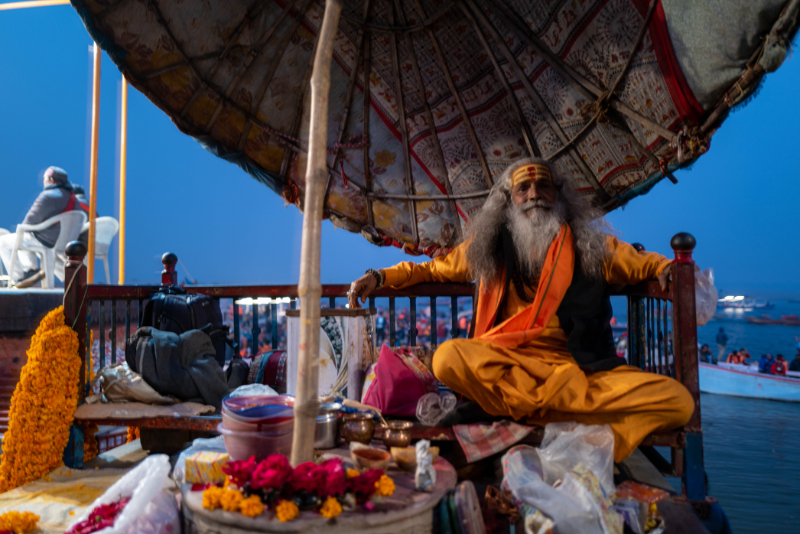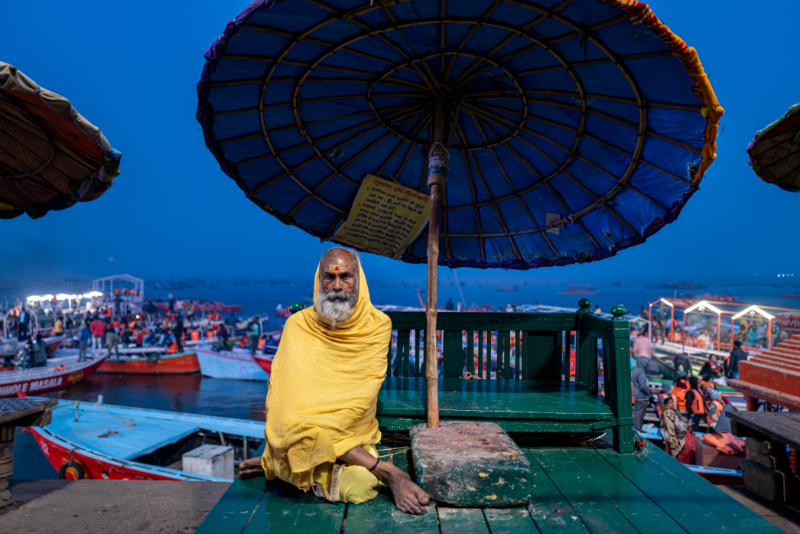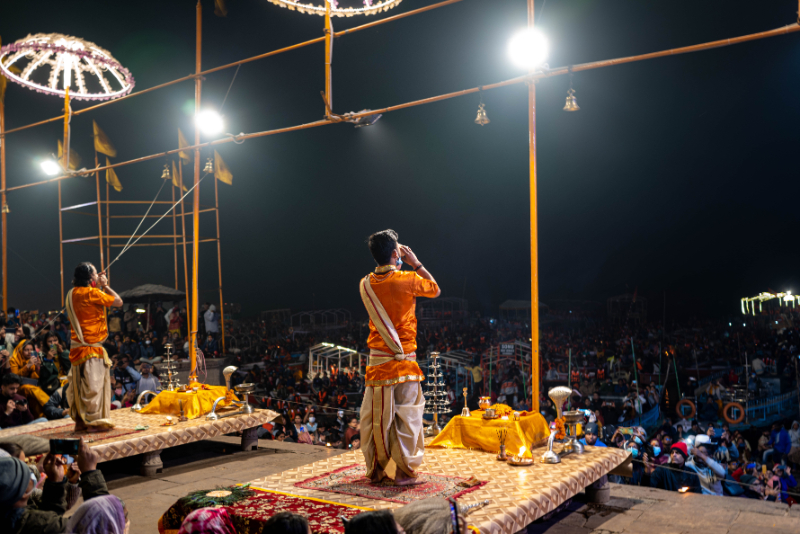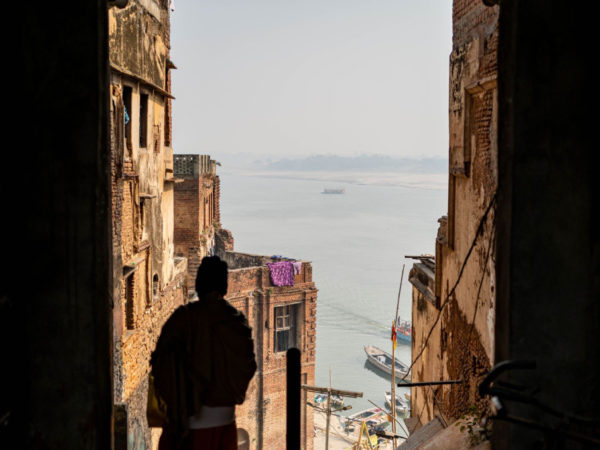ABSTRACT
Varanasi, known as the spiritual capital of India, one of the oldest cities also called Kashi, it has had an endlessly important impact on our past as well as our present. It is indeed a ‘fantasy’ with its dizzying array of temples, its endless steps, narrow lanes, the bazaar selling small bottles of holy Ganga water to a variety of statues of deities. The hustle-bustle and the deep sense of the spiritual are priceless.
Capturing this duality of the crowded yet the peaceful, photographer Shalini trains her lens to focus on the city of Banaras, with its bright colours and dark undertones of contemplative spirituality; it is a city that represents the continuity of life and death. With its lights, streets, Ghats, sunrise and sunset, the city frames the context of our existence, our demise, and essentialises our faith. Shalini points out that many great masters, including Ram Kumar, have been inspired by Varanasi, and she takes a page out of its art and ancient history and brings to it a contemporary tale that she has both photographed and painted–in 2005 and 2007.
The city where one comes to gain enlightenment Shalini captures a telling frame, where four women appear to be standing before an intricately carved temple that appears at an angle that almost contradicts gravity and it appears that the temple is about to take flight. At this moment, she captures that sense that there is more to life than what meets the eye, perhaps it is that ‘moment of magic’ that has always appealed to her, something that defeats time and continuity and goes into the otherworldly.
Kashi was once associated with a kingdom that has been traced back to 2,500 years ago. The Lion capital of King Ashoka at nearby Sarnath has been interpreted to be a commemoration of the Buddha’s first sermon in the fifth century BCE.
Since ancient times, the city has been an important pilgrimage centre, with an aura of mysticism that accentuates its cultural significance.
In another frame Shalini captures the play of light upon a bright saffron-coloured statue of Lord Ganesha framed by four doorways— there is the outer realm which is a brightly lit stone doorway decorated with white geometric patterns transitioning into a darker interior and wooden doorway. Next, one is entranced by the cool blue interiors of the temple wall and finally, to the dark niche where the statue sits shining out its inner radiance in that vibrant tone of tangerine. The image reflects a serene environment of the surroundings.
In another frame Shalini captures a group shot of the children dressed up as Gods, embodying goddess Durga Ma, Lord Shiva and Parvati, it is both playful and deeply spiritual.
Shalini also builds portraits of holy men; a sage sits on the steps, and in a moment of meditation, the-black-and-white photograph contrasts the colourful nature of the other frames reflecting the intense oneness of their devotion.
Contrasting these close-studies are photographs that capture the cityscape, where a boat eddies on the waters of the Ganges and the temple lights dance off the surface of the river Ganga, or another where the entire length of the temple structures frame the waterside, dotted with umbrellas of stalls and pilgrims, several on the steps of the temples whilst others take their holy dip into the waters of the Ganges.
The historic, the mythological as well as the contemporary are all framed by Shalini through the lens of her Nikon and Leica camera in this arresting body of work.

